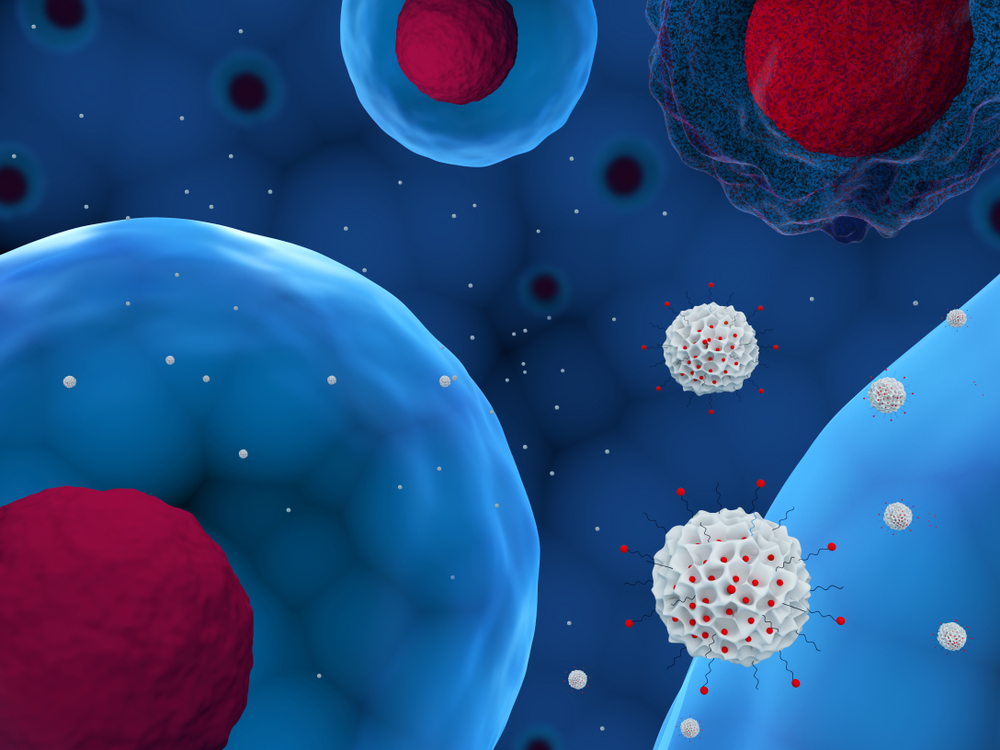Small Tear Glands Grown in Lab Could Aid in Studying Sjögren’s

A newly established cellular model of the tear gland may be useful for studying Sjögren’s syndrome and other diseases in which the tear glands become damaged, according to researchers.
The model was described in a new study, “Exploring the human lacrimal gland using organoids and single-cell sequencing,” published in Cell Stem Cell.
Also called the lacrimal glands, the tear glands are responsible for making tears and for keeping the eyes moist and lubricated. Sjögren’s syndrome is caused by the immune system attacking the tear glands, as well as the glands that make saliva, which leads to decreased production of both tears and saliva.
The tear gland is made of specialized cells that secrete the various components in tears. These components range from mucus-like proteins to fats to anti-bacterial substances.
To help scientists understand the biological processes that drive Sjögren’s syndrome and other diseases of the tear gland, it is useful for them to have cellular models of this organ. However, just growing cells in dishes in a lab is a poor model of the intricate three-dimensional layout of cells in a human organ.
Now, a team of researchers in the Netherlands determined how to make an organoid model of the tear gland using mouse or human cells. As the name suggests, an organoid is a cellular model that is designed to resemble a small organ. In the lab, the cells are arranged in a three-dimensional structure that can more closely mimic the architecture of an organ than traditional cell cultures in dishes.
“Treatment options for patients with lacrimal gland disorders are limited partly due to a lack of biological understanding,” the researchers wrote.
“Patient-derived organoids open up new avenues to study lacrimal gland biology and diseases,” they wrote.
First, the researchers figured out a protocol for creating tear gland organoids from mouse cells. In simple terms, this involved growing the cells in a specialized medium, with specific signaling molecules added or removed at critical timepoints. The protocol was then adapted for human cells, using tear gland cells obtained during biopsies.
These organoids could be grown in a lab for months, the team showed. Moreover, they demonstrated that the organoids resembled actual tear glands in terms of the cells’ shape and transcriptomes — the extent that different genes are “turned on or off” in cells.
Further, by analyzing gene expression at the single-cell level, the team showed that the cellular makeup of the lab-made organoids was similar to that of actual tear glands.
The researchers also showed that a gene called Pax6, which helps control many aspects of eye development, is necessary for the proper formation of lacrimal gland cells. When cells were engineered to lack the Pax6 gene, the cells were unable to effectively form organoids.
“These data show that Pax6 is essential to maintain adult lacrimal gland duct function and identity,” the researchers wrote.
The team further demonstrated that their organoid tear glands could produce tears when given the proper chemical cues – which are normally given by nerve cells in the body.
“Organoids represent a tractable model to better understand the biology of the lacrimal gland and study the pathologies of tearing,” the researchers concluded.
The organoid tear glands also could produce tear-related proteins when they were transplanted into mice. Notably, when human tear gland organoids were transplanted into mice, the cells self-organized into architectures similar to what is found in a normal tear gland.
According to the researchers, this is an early step toward regenerative medicine therapies — the general idea being that a new tear gland could be grown and/or implanted in someone whose gland has been damaged by disease.
They stressed, however, that these results are still preliminary. In particular, the investigators emphasized a need for future work to examine whether these transplanted glands can actually restore the function of the tear gland.
Also of note, the lacrimal gland mainly contains two types of tear-producing cells: ductal cells, which store the tear products for secretion, and acinar cells, the main producers of tear fluids.
The cells in the newly developed organoids, “predominantly represent the ductal compartment of the tissue,” the researchers wrote, adding, “This is important to keep in mind with the use of this experimental platform.”






